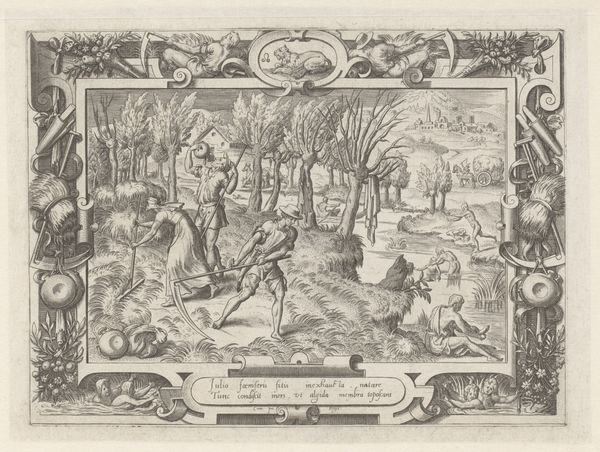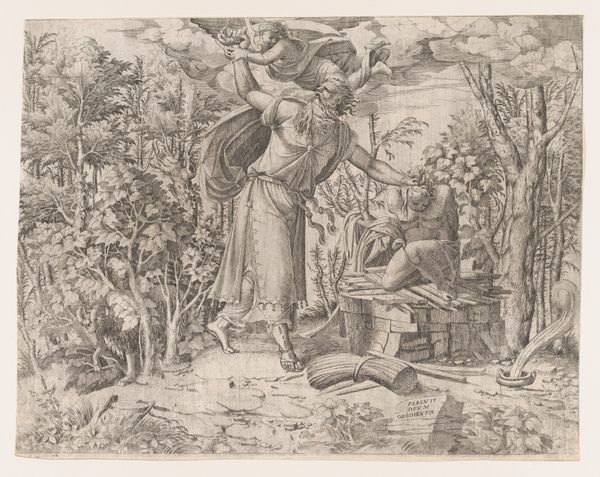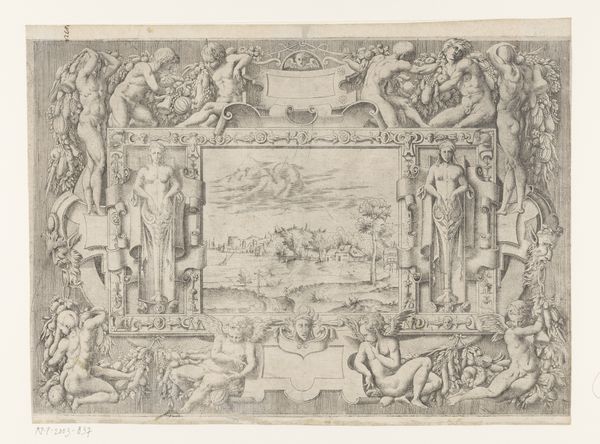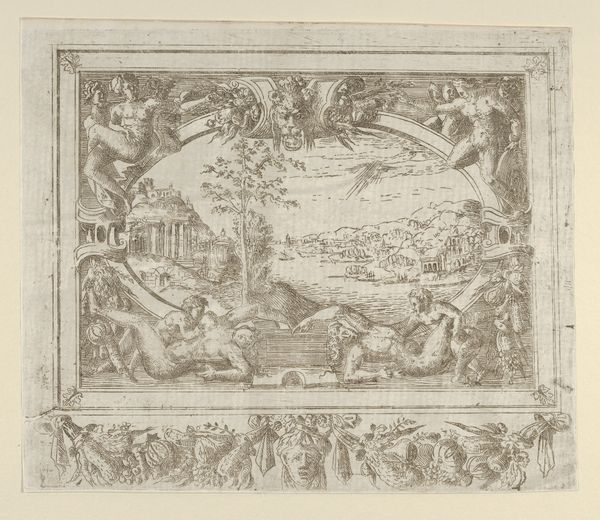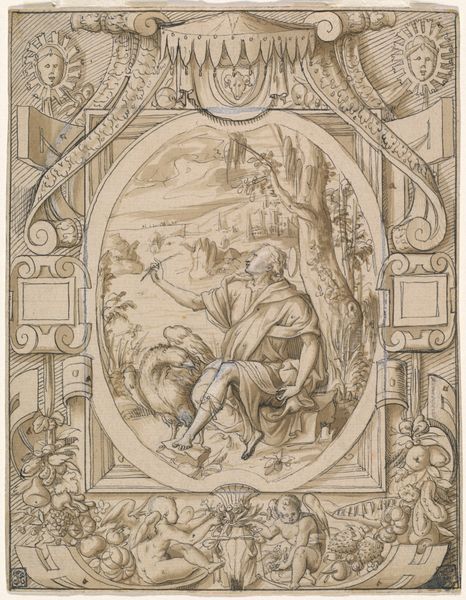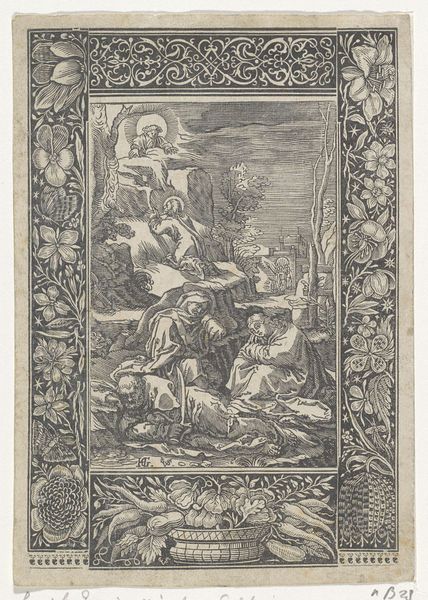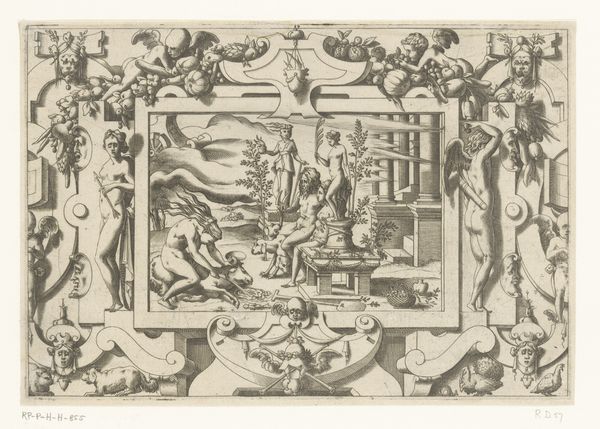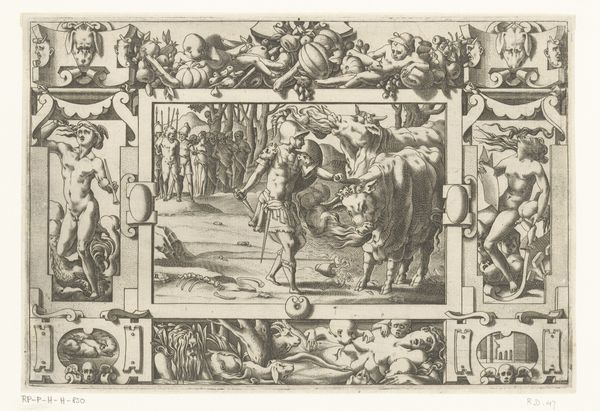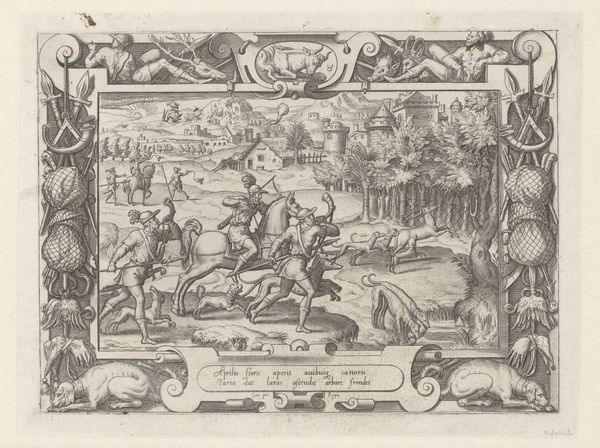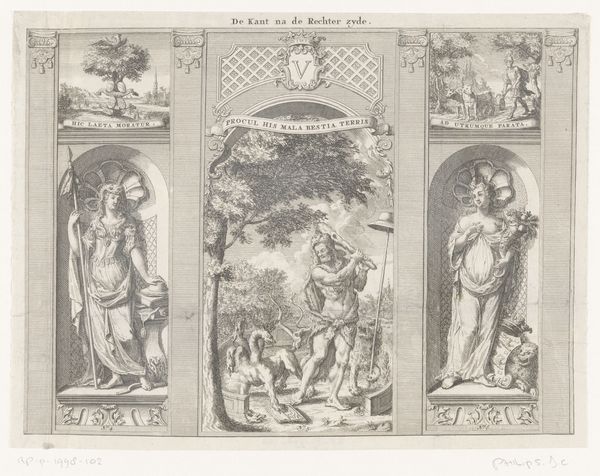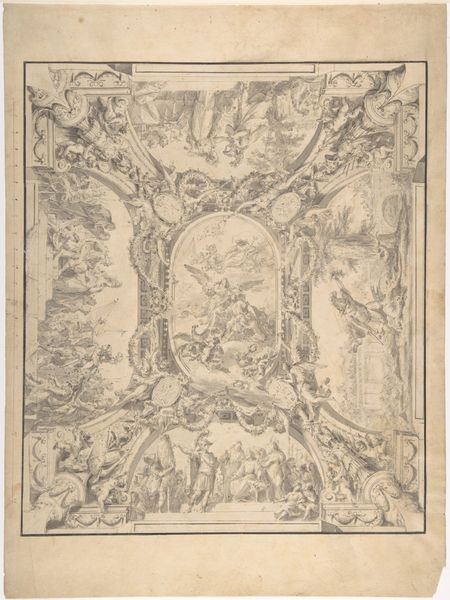
drawing, ink
#
drawing
#
allegory
#
landscape
#
figuration
#
form
#
11_renaissance
#
ink
#
line
#
history-painting
#
northern-renaissance
#
nude
Dimensions: height 445 mm, width 583 mm
Copyright: Rijks Museum: Open Domain
Curator: The initial impression is striking, almost unsettling in its hyper-detailed yet ethereal landscape. It reminds me of old anatomical drawings—scientifically observed but creatively rendered. Editor: Indeed! We are looking at “The Creation of Eve," a drawing in ink, dating back to before 1545. It is currently housed in the Rijksmuseum. What is particularly remarkable is how Jean Mignon marries fine linework with such an expansive vision of a symbolic landscape. Curator: The level of craft is outstanding. It makes me think about Mignon’s workshop: who assisted him? What kind of tools did they have access to? How were such detailed prints disseminated, and what was their value as tradeable objects in the Renaissance market? Editor: Absolutely! The piece's layered significance is something to behold: it places biblical narrative firmly within the aesthetic and intellectual currents of its time. It's about identity, about origin, and about how gender roles were being codified and questioned. Look at Eve's active gesture versus Adam’s almost inert form. The drawing makes a distinct claim about who holds the agency. Curator: I think that Mignon utilized ink and line not only to represent, but also to participate in larger societal discourses, maybe unconsciously, through available resources, techniques, workshop practices, or distribution channels. Editor: And the setting within the frame also invites exploration. Its very presence challenges the viewer to place the work within various layers of cultural contexts. Were this artwork received differently by women viewers versus men, how might access be policed depending on class, religion, or familial structures? Curator: Considering labor again, look at the varying line weights, it's possible to hypothesize the use of differing styluses or perhaps even the hands of various workers within Mignon’s studio who translated the master's designs into physical realities, making the production almost collaborative. Editor: Precisely. Examining these questions is key to unveiling a nuanced understanding of "The Creation of Eve"—it provides an illuminating lens through which we can assess historical narratives about agency, faith, and power. Curator: Analyzing this drawing gives great insights into the means through which religious iconography gets translated into popular imagery by Northern Renaissance studios for local elites. Editor: Agreed, by studying artworks through intersectional prisms and acknowledging its place as a confluence of social, artistic, and historical currents, one gains a more intricate perspective into works of the past.
Comments
No comments
Be the first to comment and join the conversation on the ultimate creative platform.

